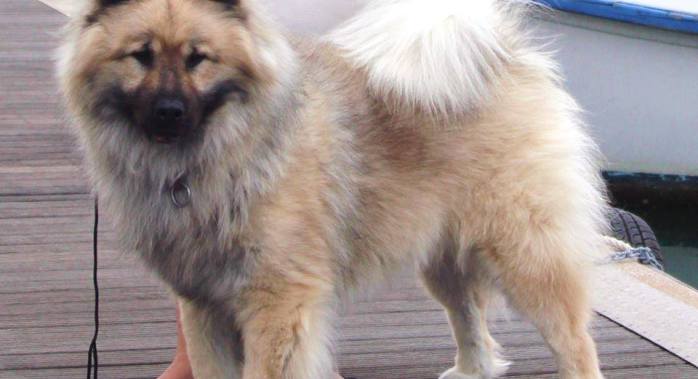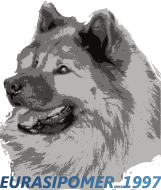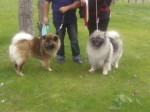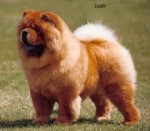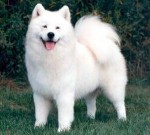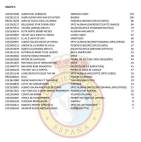Historia del Eurasier
La "creación" del Eurasier, fue una idea de Julius
Wipfel.
Las Sociedades que formaron parte esencial en la creación de la raza en Alemania son:
UDRG.- Verband Deutscher Rasse-und Gebranchshundevereine e.V.,
Frankfurt.
VDH.- Verband für das Deutsche Hundewese
Dortmund e.V.
En el reconocimiento a escala internacional intervino:
En 1966, la U.C.I..- Unión Cinófila de Bruselas.
En 1973, la F.C.I..- Federación Cinológica Internacional.
Ya de niño Julius Wipfel, tuvo un vivo interés por todos los temas animales, pero
particularmente por el perro. Después de la Segunda Guerra Mundial se estableció con su familia en Weinheim, donde tomo el contacto con el perro, con un ejemplar probablemente abandonado por los
soldados canadienses. Este tipo de perro le entusiasmo, por su carácter y por sus hábitos domésticos, era como el decía un "semi-salvaje domesticado".
Años después, llego a su hogar una hembra de Wolf-Spitz, y junto con su esposa, comenzaron a incubar la idea de un nuevo tipo de perro, que se pareciera al "canadiense", y a
su nueva amiga.
La forma de criarlo no fue reconocida en un principio por todos: el Eurasier es un descendiente puro del Samoyedo primitivo, y en ningún caso, una
obra de mezclas que asemejen a un bastardo de Chow-Chow.
Conoció al profesor Konrad Lorenz, al leer las publicaciones de este sobre los cruces que había realizado el profesor de Pastor Alemán y el
Chow.
Comenzó el trabajo sobre el Eurasier, buscando mas información sobre el Chow, Dogo del Tibet y
Samoyedo. En los años 60, el objetivo se definió, la pareja del Chow debía ser el Wolf-Spitz, aislando el material
genético del antepasado inicial, el Samoyedo, llevado de forma recesiva por el Chow.
El proyecto estaba claro, se buscaba un tipo de perro polar, con colores atrayentes y carácter encantador, bien adaptado a nuestras condiciones de vida, un tipo de perro diferente al
Chow y al Wolf-Spitz. Al no existir trabajos escritos en cinologia que pudieran guiarle en el seguimiento solicitó ayuda del Instituto de
Estudios Veterinarios y de Genética Animal de la Universidad de Göttingen.
Finalmente fueron inscritos en el Libro de Orígenes más de 200 ejemplares como de raza Wolf-Chow. Volviendo a tomar contacto con el Profesor
Lorenz, obteniendo un intercambio de ideas decisivas para la modificación del Wolf-Chow en Eurasier.
Así fue como el tipo del Chow y del Spitz fue suprimido al máximo y un standard totalmente nuevo fue definido, habiendo terminado las reglas de
cría del Eurasier y registrado en la FCI.
History of eurasier
The "creation" of Eurasia, was the brainchild of Julius
Wipfel.
Societies that formed an essential part in the creation of the breed in Germany are:
UDRG .- Rasse-und Deutscher Verband eV Gebranchshundevereine, Frankfurt.
VDH Verband für das Deutsche .- Hundewese Dortmund eV
In the international recognition intervened:
In 1966, the UCI cinófilos .- Union in Brussels.
In 1973, the FCI FCI .-.
Julius Wipfel as a child, had a keen interest in all animal subjects, but
particularly by the dog. After the
Second World War he settled with his family in Weinheim, where I take contact with the dog, with a copy probably abandoned by Canadian soldiers. This type of dog is excited, by their nature and their
domestic habits, it was like saying a "semi-domesticated wild."
Years later, I come to your home a female Wolf-Spitz, and along with his wife, began to hatch the idea of a new type of dog that resembled the "Canadian" and his new friend.
The way to raise it was not recognized at first by all: the Eurasier is a pure descendant of the Samoyed primitive, and in any case, a work of mixtures similar to a Chow bastard.
Met Professor Konrad Lorenz, reading
publications about the crosses that had been made professor of German Shepherd and Chow.
Began work on the Eurasier, seeking more information about the Chow and Samoyed
Tibetan Mastiff. In the
60's, the goal was defined, the pair Chow should be the Wolf-Spitz, isolating the genetic material of the initial ancestor, the Samoyed, carried recessively by Chow.
The project was clear, the type of dog looking for a polar, attractive colors and charming character, well adapted to our conditions of life, a different type of dog and the Wolf-Chow Spitz.
In the
absence of written work that could guide you cynology monitoring sought help from the Institute of Veterinary and Animal Genetics, University of Göttingen.
They were finally enrolled in the stud book as more than 200 copies of Wolf-Chow
breed. To reconnect with Professor
Lorenz, obtaining an exchange of ideas crucial to the modification of Wolf-Chow in Eurasia.
That was
the type of Chow Spitz was suppressed and the maximum and a whole new standard was defined, having finished the Eurasier breeding rules and registered with the FCI.
